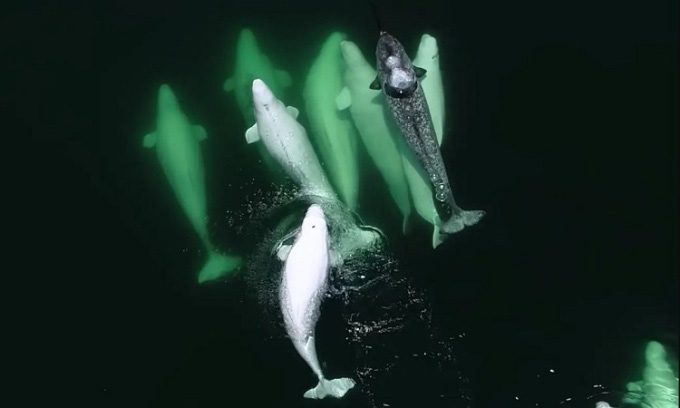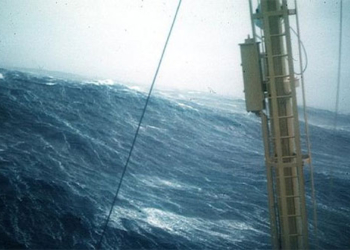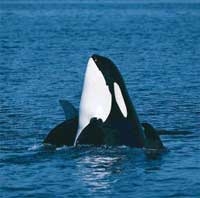Researchers are monitoring whether a beluga whale has mated with a member of its pod and produced a hybrid after adopting a narwhal a few years ago.

Narwhal swimming with a pod of beluga whales. (Photo: GREMM/Baleines En Direct)
Unusual Pod of Whales was first observed in the St. Lawrence River in North America in 2016. The solitary male narwhal was raised by a pod of beluga whales and has been swimming with them ever since, as if it were a member of the group. This case has attracted the attention of scientists. Both narwhals and beluga whales inhabit Arctic waters. Beluga whales typically migrate south in the winter when sea ice forms. Narwhals rarely leave the Arctic and spend five months under the sea ice.
Narwhals can occasionally stray from the Arctic. However, such cases are extremely rare. Over the years, researchers have used drones to assess the growth of the narwhal. From the markings on its body, they know it is indeed a narwhal. It is very healthy and integrates well with the pod. However, the research team still has many questions they want to answer.
Although adoption behavior in animals can be explained by various reasons, raising offspring of another species continues to puzzle researchers. In a 2018 paper, behavioral ecologist Erin Siracusa suggested that this could be a protective strategy against predators, providing safety through numbers. Another explanation is that both species are highly social, and the adoption stems from friendship. However, this is certainly not the only reason for this peculiar friendship, according to Siracusa.
Researchers estimate that the male narwhal is currently about 12 years old and has matured. Robert Michaud, president and scientific director of the Group for Research and Education on Marine Mammals (GREMM), stated that hybridization could occur and has happened a few times before. It is possible that a narluga, a hybrid between beluga whales and narwhals, may emerge in the future.
According to Michaud, the high level of integration of the narwhal with the pod implies reproductive potential. There are many interactions between the narwhal and beluga whales, including social and sexual behaviors from both sides. Researchers will continue to monitor the narwhal and search for offspring.
To reproduce, young narwhals must approach other males in the pod to join a coalition. If successful, the hybrid of the two species needs to develop so that scientists can distinguish it from typical juvenile beluga whales. In 2019, the University of Copenhagen analyzed the DNA of an unusual skull found in Greenland in 1990. The research team at the university found that the skull belonged to a first-generation hybrid of the two species. However, they are still unclear whether this hybrid can reproduce on its own.





















































